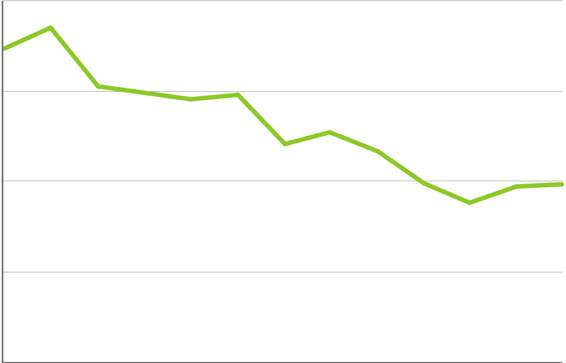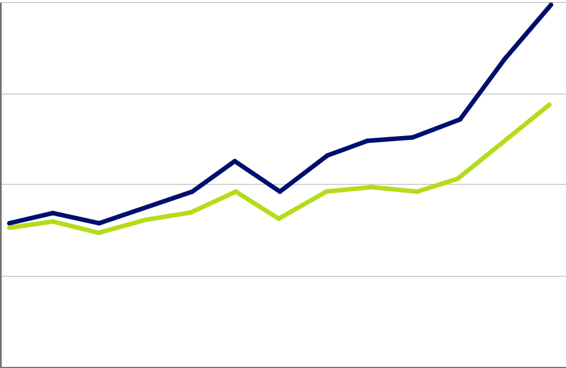12

The use of electronic funds transfer is increasing at the expense of cash and cheques due to a number of factors.
Cards are being used in preference to cash and to buy more expensive things; transaction value and volume are increasing across all digital mechanisms. Point-of-sale technologies have streamlined the buying experience, the most recent of which is NFC-based contactless cards. The convenience of contactless cards is leading consumers to use them even for quite minor purchases and was one of the drivers of Apple Pay in the U.S. At the same time, the increasing importance of remote transactions (particularly to support online commerce) is moving many transactions from the physical to the digital world. The number of electronic transactions7 averaged about 353 per person per year in Australia in 2013, an increase of about 48 per cent from 2007.8 In 2013 cash payments accounted for only 18 per cent of the value and 47 per cent of the number of transactions.9
Despite all this technological innovation, and the fact that the use of cash is in decline, cash is still the most frequently used form of payment. Consumers use it for most of their low-value transactions – about two-thirds of all payments under $20. Cheques, in contrast, are retreating to the high ground. While their use is also in decline – with an average of eight cheques written per person in Australia in 2013–14, down from 28
cheques per person 10 years earlier – the average value of a cheque rose by 19 per cent to roughly $6,800
in 2013–14.10 Cheques are mostly used for high-value payments where there is currently no suitable digital alternative. This shift to digital payments suggests that the future of payments is online.
Figure 2: Cheques per capita
10.0
7.5
5.0
2.5
0.0
2002
2003
2004
2005
2006
2007
2008
2009
2010
2011
2012
2013
2014
Cheques per capita
Source: RBA11, ABS12
The Future of Exchanging Value Cryptocurrencies and the trust economy 13

Figure 3: Average cheque value
$9000
$6750
$4500
$2250
0.0
2002
2003
2004
2005
2006
2007
2008
2009
2010
2011
2012
2013
2014
Average cheque value
CPI Adjusted
Source: RBA13, ABS14
As more payments move online, many are now being processed in real time. New platforms are being developed that enable instant transfers of value – of even quite low amounts – between institutions, between individuals and institutions, and even between individuals by supporting new ‘split the bil ’ functions. Start-ups such as Stripe15 and Square16 are the architects of some of these platforms, as are industry groups and government bodies such as the Australian Payments Clearing Association’s (APCA) with its New Payments Platform and the Property Exchange Australia, which has launched an electronic conveyancing platform.
Support is building to eliminate physical money. This would improve in-store security and reduce cash-handling costs for businesses. Many governments have a favourable view of a cashless society as it would reduce tax revenue leakage and remove an important tool from organised crime (which is why many governments have been retiring the highest denomination bank notes). Denmark has started down this road by proposing that by January 201617, selected retailers (such as clothing stores, restaurants and petrol stations) be no longer obliged to accept cash, though there are some fears this might increase the risk of fraud. Essential services – such as post offices, hospital cafeterias, dentists and chiropractors – would still have to accept Danish krone.





